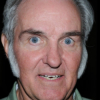Burt Rutan

Burt Rutan
Elbert Leander "Burt" Rutanis an American aerospace engineer noted for his originality in designing light, strong, unusual-looking, energy-efficient aircraft. He designed the record-breaking Voyager, which was the first plane to fly around the world without stopping or refueling, and the sub-orbital spaceplane SpaceShipOne, which won the Ansari X-Prize in 2004 for becoming the first privately funded spacecraft to enter the realm of space twice within a two-week period. With his VariEze design, Rutan is responsible for popularizing the canard configuration...
NationalityAmerican
ProfessionEngineer
Date of Birth17 June 1943
CityEstacada, OR
CountryUnited States of America
There was a wonderful little short four-year time period when marvelous things happened. It started in 1908, when the Wright brothers flew in Paris, and everybody said, 'Ooh, hey, I can do that.' There's only a few people that have flown in early 1908. In four years, 39 countries had hundreds of airplanes, thousands of pilots.
My study is NOT as a climatologist, but from a completely different perspective in which I am an expert … For decades, as a professional experimental test engineer, I have analyzed experimental data and watched others massage and present data. I became a cynic; My conclusion - 'if someone is aggressively selling a technical product who's merits are dependent on complex experimental data, he is likely lying'. That is true whether the product is an airplane or a Carbon Credit.
Airplanes were invented by natural selection. Now you can say that intelligent design designs our airplanes of today, but there was no intelligent design really designing those early airplanes. There were probably at least 30,000 different things tried, and when they crash and kill the pilot, don't try that again.
I spent about seven years during the Vietnam War flight-testing airplanes for the Air Force. And then I went in and I had a lot of fun building airplanes that people could build in their garages. And some 3,000 of those are flying. Of course, one of them is around-the-world Voyager.
I strongly feel that, if we are successful, our program will mark the beginning of a renaissance for manned space flight. This might even be similar to that wonderful time period between 1908 and 1912 when the world went from a total of ten airplane pilots to hundreds of airplane types and thousands of pilots in 39 countries.
I'm not at all embarrassed that we're opening up a new industry that will likely be a multi-billion dollar industry that's focused only on fun, ... long lasting and significant for our nation.
I knew that the significance would be known and understood by everyone in 10 years. I'm extremely pleased to see it here this early.
Breakthroughs are what define our species. They come about because we are threatened.
Dick made the point in 1986 that it would be good for someone to come out and beat the record, and he's delighted to give it up.
As opposed to the first 44 years of manned spaceflight, ... the difference is people are going to know that it is for them.
You're going to be more creative, more innovative, and have a lot more ability to stumble into a big breakthrough.
The ship that we're developing in our shop right now in Mojave will have a very large cabin.
Since Yuri Gagarin and Al Shepard's epic flights in 1961, all space missions have been flown only under large, expensive government efforts, ... By contrast, our program involves a few, dedicated individuals who are focused entirely on making spaceflight affordable.
We believe a proper goal for safety is the record that was achieved during the first five years of commercial scheduled airline service which, while exposing the passengers to high risks by today's standards, was more than 100 times as safe as government manned space flight,